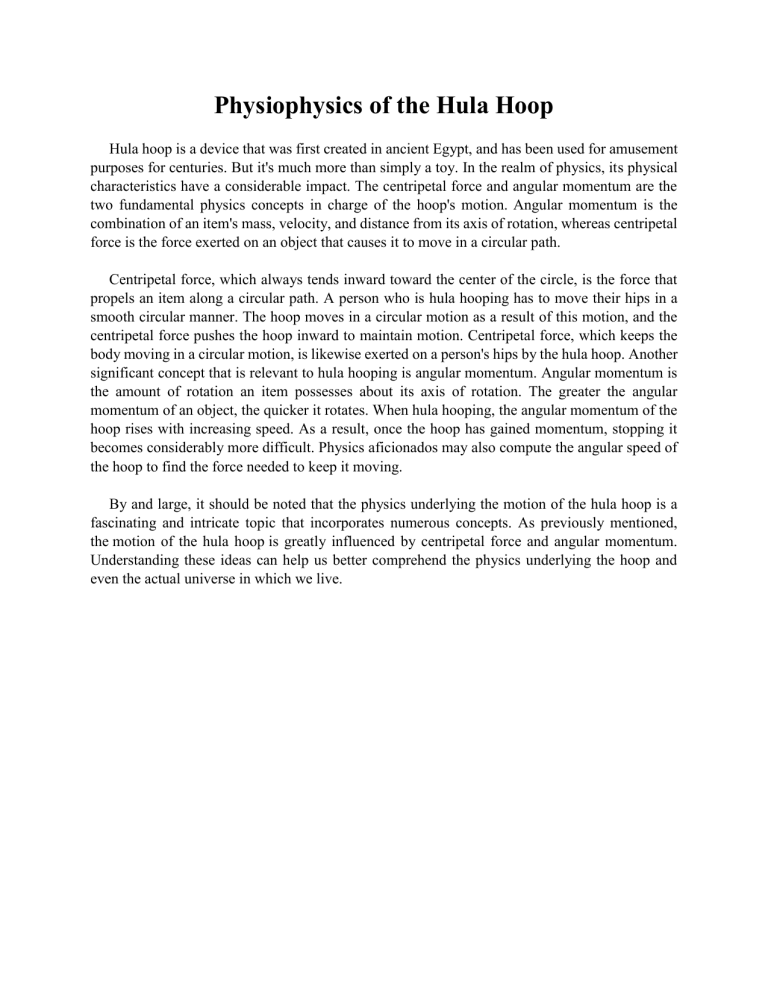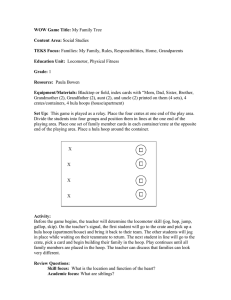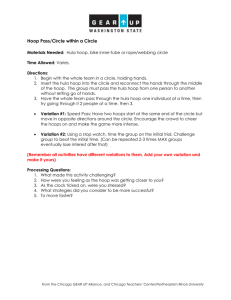
Physiophysics of the Hula Hoop Hula hoop is a device that was first created in ancient Egypt, and has been used for amusement purposes for centuries. But it's much more than simply a toy. In the realm of physics, its physical characteristics have a considerable impact. The centripetal force and angular momentum are the two fundamental physics concepts in charge of the hoop's motion. Angular momentum is the combination of an item's mass, velocity, and distance from its axis of rotation, whereas centripetal force is the force exerted on an object that causes it to move in a circular path. Centripetal force, which always tends inward toward the center of the circle, is the force that propels an item along a circular path. A person who is hula hooping has to move their hips in a smooth circular manner. The hoop moves in a circular motion as a result of this motion, and the centripetal force pushes the hoop inward to maintain motion. Centripetal force, which keeps the body moving in a circular motion, is likewise exerted on a person's hips by the hula hoop. Another significant concept that is relevant to hula hooping is angular momentum. Angular momentum is the amount of rotation an item possesses about its axis of rotation. The greater the angular momentum of an object, the quicker it rotates. When hula hooping, the angular momentum of the hoop rises with increasing speed. As a result, once the hoop has gained momentum, stopping it becomes considerably more difficult. Physics aficionados may also compute the angular speed of the hoop to find the force needed to keep it moving. By and large, it should be noted that the physics underlying the motion of the hula hoop is a fascinating and intricate topic that incorporates numerous concepts. As previously mentioned, the motion of the hula hoop is greatly influenced by centripetal force and angular momentum. Understanding these ideas can help us better comprehend the physics underlying the hoop and even the actual universe in which we live.



